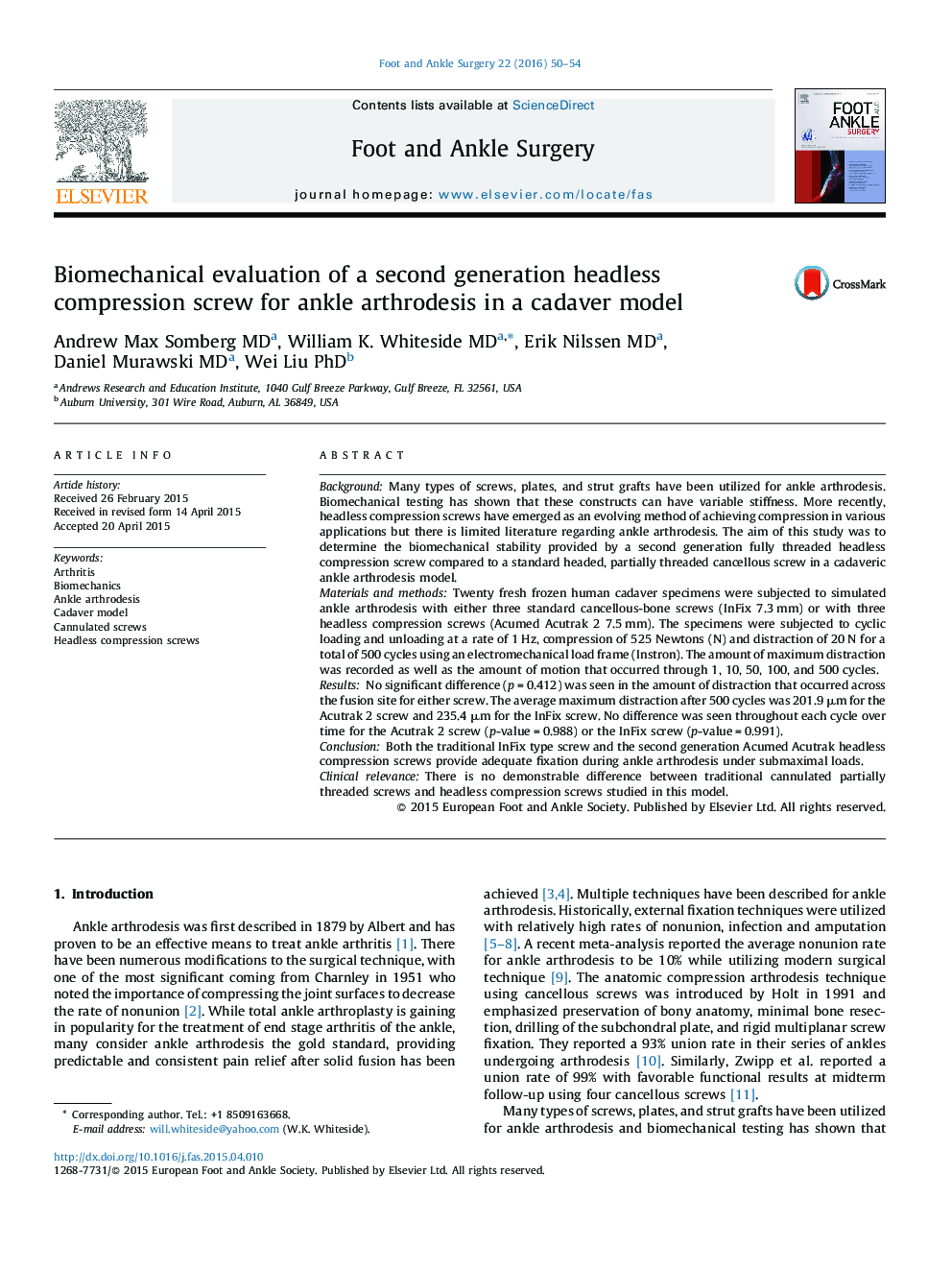| کد مقاله | کد نشریه | سال انتشار | مقاله انگلیسی | نسخه تمام متن |
|---|---|---|---|---|
| 4054596 | 1265527 | 2016 | 5 صفحه PDF | دانلود رایگان |
• We biomechanically compared two cadaveric ankle arthrodesis models using either three traditional cancellous screws or three headless compression screws.
• The specimens were subjected to cyclic loading and unloading for a total of 500 cycles using the Instron.
• The amount of maximum distraction was recorded as well as the amount of motion that occurred through 1, 10, 50, 100, and 500 cycles.
• No significant difference was seen in the amount of distraction that occurred across the fusion site for either screw after 500 cycles.
• There is no demonstrable difference between traditional cannulated partially threaded screws and headless compression screws in terms of motion in this ankle cadaveric model.
BackgroundMany types of screws, plates, and strut grafts have been utilized for ankle arthrodesis. Biomechanical testing has shown that these constructs can have variable stiffness. More recently, headless compression screws have emerged as an evolving method of achieving compression in various applications but there is limited literature regarding ankle arthrodesis. The aim of this study was to determine the biomechanical stability provided by a second generation fully threaded headless compression screw compared to a standard headed, partially threaded cancellous screw in a cadaveric ankle arthrodesis model.Materials and methodsTwenty fresh frozen human cadaver specimens were subjected to simulated ankle arthrodesis with either three standard cancellous-bone screws (InFix 7.3 mm) or with three headless compression screws (Acumed Acutrak 2 7.5 mm). The specimens were subjected to cyclic loading and unloading at a rate of 1 Hz, compression of 525 Newtons (N) and distraction of 20 N for a total of 500 cycles using an electromechanical load frame (Instron). The amount of maximum distraction was recorded as well as the amount of motion that occurred through 1, 10, 50, 100, and 500 cycles.ResultsNo significant difference (p = 0.412) was seen in the amount of distraction that occurred across the fusion site for either screw. The average maximum distraction after 500 cycles was 201.9 μm for the Acutrak 2 screw and 235.4 μm for the InFix screw. No difference was seen throughout each cycle over time for the Acutrak 2 screw (p-value = 0.988) or the InFix screw (p-value = 0.991).ConclusionBoth the traditional InFix type screw and the second generation Acumed Acutrak headless compression screws provide adequate fixation during ankle arthrodesis under submaximal loads.Clinical relevanceThere is no demonstrable difference between traditional cannulated partially threaded screws and headless compression screws studied in this model.
Journal: Foot and Ankle Surgery - Volume 22, Issue 1, March 2016, Pages 50–54
